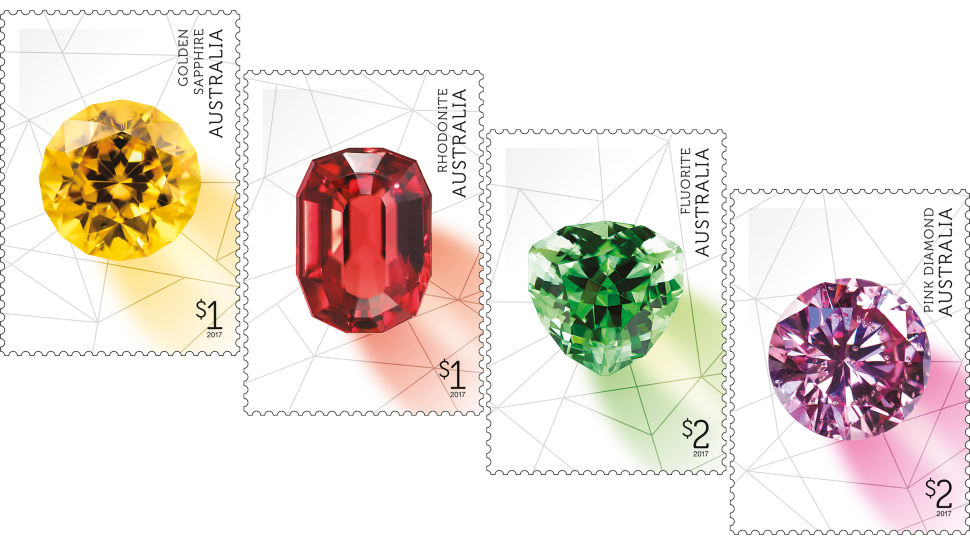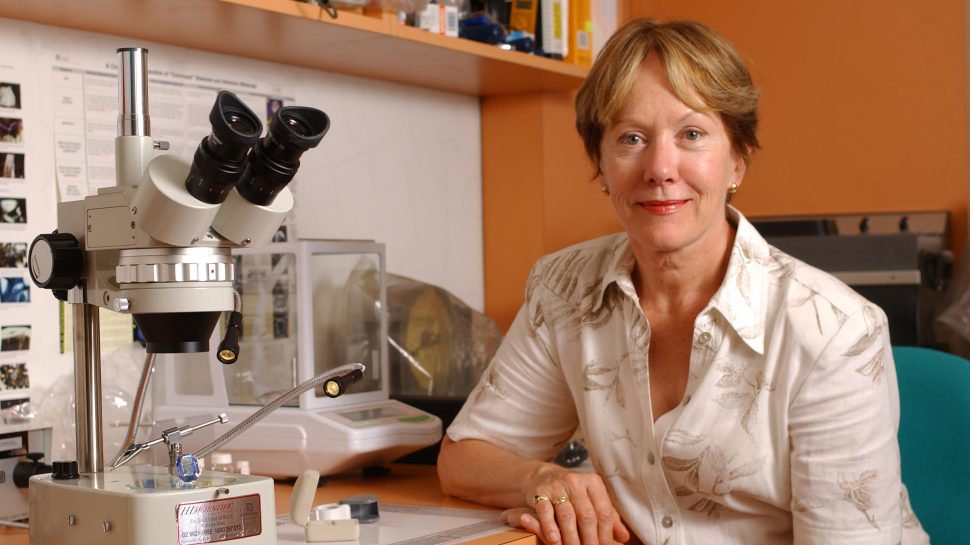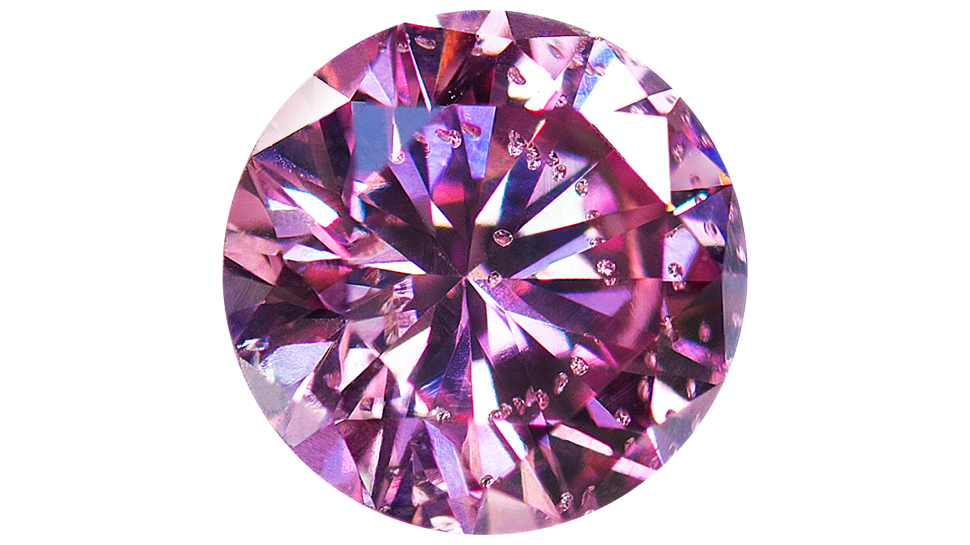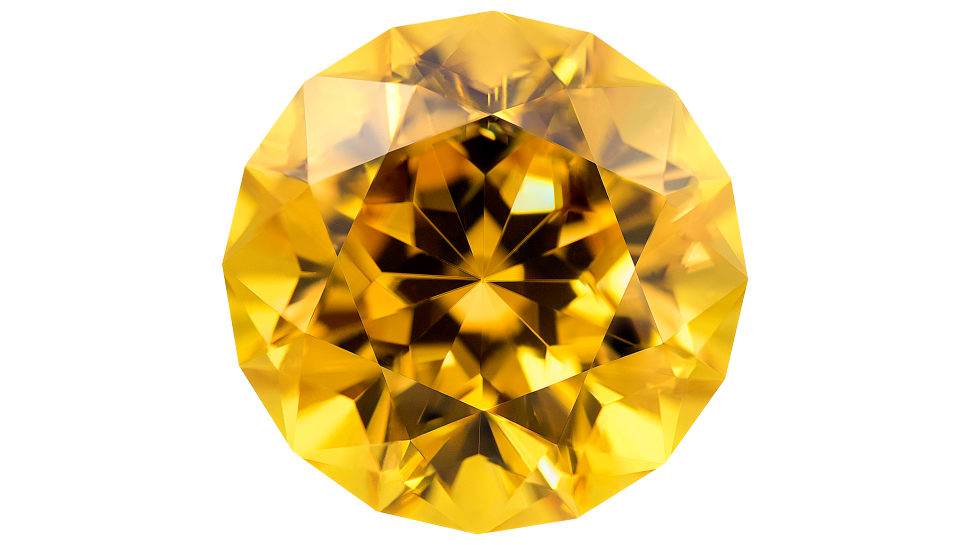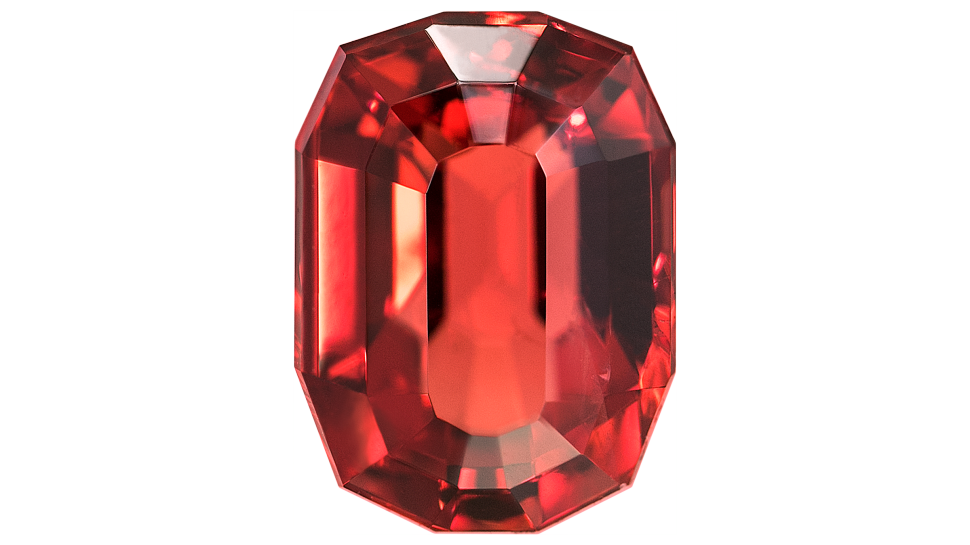Gemstones are rare and highly prized objects of beauty. As well as their application in jewellery and ornaments, gemstones form an important part of museum-based geological collections.
The Rare Beauties: Extraordinary Gemstones stamp issue, which will be released on 30 March 2017, features four stunning Australian gemstones: golden sapphire, rhodonite, pink diamond and fluorite.
As well as the stamp issue, some very special limited-edition Rare Beauties products will be released daily at the Melbourne 2017 International Stamp Exhibition, from Thursday 30 March to Sunday 2 April 2017. They will be available for purchase at the show, while stocks last.*
The stones pictured in the stamp designs are held in the mineral collection of the Australian Museum, Sydney. Two of these – the golden sapphire and the pink diamond – represent precious gemstones that are cut and polished as possible centrepieces for exquisite jewellery. The rhodonite and the fluorite exemplify stones that are valued as “collector stones”, rarities that are transformed by lapidaries into singular specimens for the pleasure of gem specialists.
We spoke to one such gem specialist, Gayle Sutherland, who co-wrote a prestige booklet as part of the stamp issue. The booklet delves into the background of these (and other) magnificent Australian gemstones.
Gayle’s passion for gemstones progressed from a childhood infatuation with jewellery to the subject of her postgraduate studies: a Diploma of Gemmology and a Diploma of Diamond Technology. She joined the (then) Geology Department at the Australian Museum in Sydney, assisting with the mineral and rock collections and, in particular, curating the gemstone collection. (Gemstones have been part of the Australian Museum’s collection since the museum began, in the first half of the 19th century.)
“I first came to gemstones via an interest in antique jewellery, oddly enough. Later I wanted to know more about the minerals and rocks from which they came. Some geologists do it the other way around, starting with rocks and becoming fascinated by gemstones. People from many different walks of life are drawn to gemstones. When I was studying gemmology I was surprised by the number of dentists and doctors doing the course!” explains Gayle.
“When I joined the Australian Museum, the wonderful collection of rocks, meteorites, minerals and gemstones vastly expanded my interest in geology and gemmology. Coming from a natural history museum, I regard gemstones as a creation of the natural world, and I am always conscious of the scientific properties by which we identify them,” says Gayle.
Due to the dedication of the geological staff, the gemstone collection at the Australian Museum has grown and developed into the one of the finest public gemstone collections in Australia.
“About half the gemstones in the collection are from Australia and the others represent world localities. As a gemmologist, I was involved in the identification, acquisition, interpretation, display and security of the gemstones. I also conducted a gemstone identification service for the public,” says Gayle.
Gayle also highlights the important contribution that geological collections make to preservation, public education and research.
“Material is collected because it is deemed important and worth preserving for future generations,” says Gayle.
“Often, the mines and areas from which these materials came are no longer productive, so the material is part of our history. Displaying minerals and gemstones provides an educational and aesthetic experience for the public, which, in the case of a state museum, owns the collections and is entitled to access them,” adds Gayle.
“The research component is carried out by scientists, with some input from enthusiasts and volunteers. There is always more to be discovered about the formation of minerals, gemstones and rocks (or for that matter any other branch of nature). New methods of analysis provide ever-increasing knowledge about their chemistry and properties. Since museum specimens are usually recorded with a precise location, information on specimens can be linked to particular environments and comparisons made. At least one new gemstone has been discovered in material from an old collection!” says Gayle.
Dr Lin Sutherland, the co-author of the Rare Beauties prestige booklet, is one such scientist and researcher (specifically, a geologist). Originally Curator of Minerals, he later became a Principal Research Scientist at the Australian Museum. He is currently a Senior Fellow in Geoscience, one of his research topics being the formation of gemstones.
Gayle’s most recent museum project, before retiring in 2015, was the Australian Museum’s new gemstone display, in which the museum’s largest, most eye-catching gemstones are on view to the public.
“Before placing the gemstones on display, I had them photographed for the website, museum-related presentations and a museum-sponsored book, Gemstones and Minerals of Australia, written by Lin and I. Stuart Humphreys, then a photographer at the museum, photographed many of the stones and developed an interest in gemstones in the process. He has done a superb job as photographer of the stones for the stamp issue too,” says Gayle.
Photographing gemstones is certainly not an easy task:
“The greatest difficulty is getting the lighting right. Since light bounces off gemstone facets, it can easily dominate the image, masking the stone’s colour. Good lighting emphasises the gem’s qualities while being almost invisible itself.
“Backgrounds are also a problem. They should not compete with the stone. A black background can make a stone look dark. A white one can drain it of colour. Expert gemstone photographers know their subject and experiment to find the effect they want. Dust is a problem, too. For some reason many photographers seem to inhabit a dusty environment. Dust can settle in a second, just as the perfect shot is all lined up.”
So how does Australia rate on a world scale in terms of the quality of its gemstones?
“Australia has some world beaters – precious opal for instance. Most of the world’s precious opal comes from this country. We also have some unique occurrences, like the regular trickle of pink diamonds mined at the Argyle mine in Western Australia. Australian sapphires excel in both quality and quantity and their extended range of colours makes them somewhat unusual on the world scene. Australia also yields a number of other gemstones that are not economical to mine but are attractive to fossickers,” says Gayle.
In terms of the gemstones featured on the stamps, Gayle outlines why these are superb examples of their type:
“The fluorite is a gemstone for collectors. It is large, exquisitely cut and a soft pastel green. Its beauty is fragile, and this stone needs particular care whenever handled and displayed. An expert cut it from New England material that was already in the museum collection.”
Museum pieces aside, how does a layperson assess the quality of a gemstone they may be interested in purchasing?
“Fortunately for buyers, it’s not rocket science,” says Gayle.
“Colour and clarity are important, also cut and size. A fine, coloured stone should exhibit an intense, pure colour and be as free as possible from inclusions. It should be well cut, so that the body colour of the stone dominates and the stone does not look dark, or overly transparent. Since large gemstones are generally less common than small ones, size can make a stone more desirable, all other features being equal.”
The Rare Beauties: Extraordinary Gemstones stamp issue is available from 30 March 2017, online, at participating Post Offices and via mail order on 1800 331 794, while stocks last.
Rare Beauties: Extraordinary Gemstones limited edition products will be released daily at the Melbourne 2017 International Stamp Exhibition from Thursday 30 March to Sunday 2 April 2017, at the Rupert Clark Grandstand, Caulfield Racecourse. They will be available for purchase at the show, while stocks last.* For product previews, see the March–April 2017 edition of the Stamp Bulletin.
* Where products are available in limited numbers, Australia Post has the right to limit numbers available for sale to individual customers based on demand.
View the gallery of stamps and technical details for this issue.
This article was produced at the time of publication and will not be updated.

